23 Soul-Warming African Poultry Dishes You Need to Taste
African poultry dishes showcase the continent's rich culinary heritage with vibrant flavors and incredible diversity.
Succulent meats tell stories of regional traditions, family gatherings, and cultural connections passed through generations.
Spices, herbs, and cooking techniques transform simple ingredients into extraordinary meals that tantalize taste buds.
Each recipe reflects local landscapes, agricultural practices, and community customs unique to specific African regions.
These dishes represent more than nutrition; they are edible narratives of social interactions and historical influences.
Cooking methods range from slow-simmered stews to open-flame roasting, highlighting remarkable ingenuity and resourcefulness.
Regional variations demonstrate incredible creativity in preparing chicken, duck, and other feathered delicacies.
Here are 23 signature African poultry dishes that will transport you across a flavorful continent:
Signature African Poultry Dishes for Every Celebration
African kitchens elevate poultry with rich spices and bold marinades. Roasted, grilled, or simmered, these signature recipes are perfect for festive tables and family gatherings.
Rfissa
Rfissa represents a celebrated Moroccan comfort dish featuring tender stewed chicken layered over shredded msemmen or traditional pastry with rich spices like saffron, ginger, and ras el hanout.
Deeply rooted in Moroccan culture, this hearty meal celebrates family gatherings and special occasions like welcoming a newborn.
Lentils and fenugreek seeds add nutritional depth and complex flavors to the succulent chicken.
Women prepare this communal dish with meticulous care, slowly simmering ingredients to develop intense taste profiles.
Families traditionally share the platter, each person eating from their designated section.
Guests savor the intricate blend of spices and textures that make rfissa a beloved traditional recipe.
Moroccan households consider this dish a symbol of hospitality and connection.
Doro Wat
Doro wat are spicy Ethiopian chicken stews celebrated for their intense flavor and cultural significance across East African celebrations.
Tender chicken pieces soak in lemon juice and salt before being slowly simmered with berbere spice blend, creating a deep red sauce with complex heat.
Whole hard-boiled eggs absorb the stew's rich seasonings, adding extra protein and traditional texture to the dish.
Families prepare this special recipe during major holidays like Christmas and Easter, marking important social gatherings.
Traditional preparation involves cutting chicken into smaller pieces and cooking them gradually with onions, garlic, and native spices.
Markets supply fresh ingredients, with outdoor vendors offering prime chicken selections.
Berbere, a signature spice mix, determines the stew's characteristic warmth and depth.
Ethiopian and Eritrean communities consider doro wat a centerpiece of festive meal experiences.
Chicken Tajine
Chicken tajine represents a signature Moroccan slow-cooked stew featuring bone-in chicken simmered in a distinctive cone-shaped clay pot.
Moroccan cooks expertly layer tender chicken pieces with aromatic spices like cumin, saffron, and coriander to create complex flavor profiles.
Traditional recipes incorporate vegetables such as onions, carrots, and tomatoes for added depth and nutrition.
Preserved lemons, olives, almonds, and apricots frequently enhance the dish's unique taste and texture.
Slow cooking allows meat to become incredibly tender and infused with rich, multilayered seasonings.
Mediterranean and North African influences contribute to its robust and memorable character.
Serving the tajine directly from its cooking vessel maintains heat and presents an authentic dining experience.
Peri Peri Chicken
Peri peri chicken bursts with fiery African-Portuguese flavors from Mozambique, featuring grilled or roasted chicken marinated in a blazing blend of bird's eye chilis, cumin, garlic, paprika, and lemon juice.
Portuguese settlers crafted this spicy dish by adapting local chili pepper techniques from Swahili regions.
Piri piri (meaning "pepper pepper") signifies the intense heat that defines the chicken's character.
Coconut sauce often accompanies the meat, adding creamy complexity to the scorching protein.
Grilling remains the traditional preparation technique.
Spice levels range from mild to extremely hot, satisfying diverse palates.
Tajine Zitoune
Tajine zitoune is a vibrant Moroccan chicken stew featuring succulent chicken pieces slow-cooked with briny olives and aromatic spices.
Originating from North African cuisine, this dish combines tender chicken with blanched olives, creating a harmonious blend of savory and tangy flavors.
Onions, carrots, and mushrooms enhance the rich taste profile, while thyme and bay leaves add depth to the sauce.
Saffron or turmeric provides a warm, golden color and distinctive aroma.
Cooks carefully brown the chicken with spices before simmering it in water with vegetables and olives until perfectly tender.
A final touch of flour and lemon juice creates a smooth, zesty sauce that elevates the entire dish.
Traditionally prepared in a tagine and garnished with fresh cilantro, tajine zitoune is best served hot alongside fragrant saffron rice.
Yassa
Yassa are succulent chicken pieces marinated in a zesty blend of lemon and vinegar that transforms tough Senegalese poultry into a mouthwatering national dish.
Onions play a critical role in softening the meat during an eight-hour marinating process that breaks down protein fibers and infuses intense flavor.
Senegalese cooks carefully prepare the chicken over medium-high heat, allowing the marinade to reduce into a rich, tangy sauce.
Traditional serving methods include pairing the tender meat with fluffy white rice on brightly decorated plates.
Fufu and couscous also complement the dish perfectly.
French colonial influences helped shape this beloved recipe from Casamance.
Restaurants and home kitchens across Senegal celebrate this iconic meal as a testament to the country's vibrant culinary heritage.
Poulet Dg
Poulet DG represents a luxurious Cameroonian chicken dish originally prepared for executives and high-ranking professionals.
French-inspired nomenclature signals its upper-class origins, with "DG" meaning Directeur General (CEO).
Rich tomato sauce coats tender chicken pieces and caramelized ripe plantains, creating a complex flavor profile.
Colorful vegetables like green beans, bell peppers, and carrots add visual appeal and nutritional depth.
Crispy chicken skin provides textural contrast against soft plantain chunks.
Regional spices and cooking techniques contribute to its distinctive taste.
Traditional preparation involves carefully layering ingredients to maximize flavor integration.
Muamba De Galinha
Muamba de galinha showcases Angola's rich culinary heritage through a spicy chicken stew bathed in vibrant red palm oil.
Portuguese colonial influences deeply shaped this traditional dish, combining African ingredients with European cooking techniques.
Chicken simmers with okra, garlic, and fiery chile peppers in a thick sauce that bursts with intense flavors.
Lycopene-rich palm oil gives the stew its distinctive crimson color and provides significant health benefits, including heart disease prevention and cholesterol regulation.
Antioxidants in the dish contribute to its nutritional profile, making it more than just a satisfying meal.
Each region in Angola prepares muamba de galinha with slight variations, reflecting local ingredient availability.
Regional spice levels and cooking methods create unique interpretations of this classic national dish.
Hot chile peppers provide a signature kick that elevates the overall taste experience.
Cabidela
Cabidela are Portuguese blood-based rice dishes featuring poultry or game meat prepared with animal blood, creating a dark, uniquely creamy delicacy originating in Northern Portugal.
Meat and rice simmer together in a rich sauce enhanced by red wine or vinegar, which balances the blood's intense flavor profile.
Cooking techniques involve carefully integrating fresh blood during preparation to develop the signature dark color and smooth consistency.
Game meats like chicken, duck, or rabbit work best for authentic versions.
Vinegar or wine helps neutralize the blood's strong taste while adding complexity to the dish.
Traditional preparation requires skill and careful handling of ingredients to achieve the perfect balance of flavors.
Akoho Sy Voanio
Akoho sy voanio represents Madagascar's signature chicken coconut stew bursting with complex tropical flavors and rich culinary heritage.
Malagasy cooks prepare this traditional dish by marinating chicken pieces in lemon juice and seasonings before sautéing with fragrant onions and garlic.
Coconut milk forms the creamy base that transforms the chicken into a silky, aromatic main course.
Tomatoes and ginger add depth and warmth to the sauce, creating a balanced flavor profile.
Cayenne pepper provides a subtle heat that complements the coconut's sweetness.
Slow cooking allows the ingredients to meld together, producing a tender and succulent chicken dish.
Families often serve akoho sy voanio with steamed rice, making it a comforting and satisfying meal.
Daube De Poulet
Daube de poulet are succulent chicken pieces braised in a robust tomato sauce that reflects Mauritius' culinary fusion of French and Creole traditions.
French settlers originally introduced this hearty stew to the island, transforming classic beef preparations into a chicken-based specialty.
Mauritian home cooks carefully season chicken with aromatic spices like ginger, onions, and garlic before slow-cooking it in a spicy tomato sauce.
Chili peppers add depth and heat to the dish, creating a complex flavor profile that distinguishes it from other regional chicken stews.
Each cooking method ensures tender meat infused with layers of seasoning and rich sauce.
Families often serve daube de poulet with white rice or bread to soak up the flavorful sauce.
Regional ingredients and personal touches make this dish a genuine representation of Mauritian home cooking.
Liberian Chicken Gravy
Liberian chicken gravy represents a luxurious meat stew reserved for significant celebrations in Liberia where protein remains an expensive delicacy.
Families carefully select tender chicken pieces and complement them with succulent shrimp, creating a rich protein-packed dish.
Fresh green beans, vibrant bell peppers, ripe tomatoes, and sweet onions provide additional layers of flavor and nutrition.
Chicken stock serves as a robust foundation, intensifying the stew's depth and complexity.
Skilled home cooks slowly simmer ingredients to develop complex taste profiles that honor traditional cooking methods.
Regional spices and careful preparation transform simple ingredients into an extraordinary meal.
West African cooking wisdom shines through this carefully crafted, protein-rich stew that celebrates community and connection.
Kuku Wa Kupaka
Kuku wa kupaka are succulent Kenyan coastal chicken pieces generously bathed in a rich, creamy coconut milk sauce bursting with complex spices.
Coastal communities in Kenya treasure this dish for its unique blend of Arabian and Swahili culinary influences.
Tender chicken absorbs deep flavors from cumin, turmeric, and lime juice during slow cooking.
Tomato paste adds vibrant color and tangy undertones to the smooth sauce.
Coconut milk creates a luxurious, creamy texture that distinguishes this dish from other regional recipes.
Traditionally served with rice or flatbread, kuku wa kupaka offers a balanced mix of spicy and creamy elements.
Each bite reflects Kenya's rich multicultural cooking traditions.
Ingoho
Ingoho represents a prestigious Kenyan chicken dish exclusively prepared by Luhya tribes in Western Kenya for honored guests.
Traditionally roasted whole, this special poultry meal carries significant cultural importance among Luhya communities.
Families carefully select and prepare the chicken with meticulous attention to achieving a perfectly golden-brown exterior.
Roasting techniques ensure tender meat with crispy skin, making the dish a remarkable delicacy.
Guests receiving ingoho understand they are experiencing a profound sign of respect and hospitality.
Western Kenyan households consider this roasted chicken a symbol of celebration and social connection.
Regional cooking methods involve slow roasting over open flames or traditional wood-fired ovens.
Luhya tribes view ingoho as more than a meal, treating it as a meaningful social ritual.
Thiebou Guinaar
Thiebou guinaar is a beloved Senegalese rice dish celebrated for its rich, layered flavors and complex cooking method that transforms simple ingredients into a deeply satisfying meal.
Senegalese families traditionally prepare this hearty one-pot wonder by first marinating chicken pieces and browning them in a flavorful base of tomato paste and aromatic spices.
Chicken is carefully simmered with bouillon cubes and fresh vegetables, creating a robust cooking liquid that infuses every ingredient with depth and character.
Cooks remove the tender meat and vegetables before using the same fragrant broth to steam rice, ensuring maximum flavor absorption.
Once prepared, the dish is artfully assembled by spreading rice on a large serving plate and arranging browned chicken pieces and colorful vegetables on top.
Fresh garnishes add brightness and texture to the final presentation.
Djerma
Djerma stew bursts with rich Niger culinary heritage, blending robust chicken with a complex sauce of peanut butter, tomatoes, and aromatic spices.
West African cooks carefully sauté chicken, onions, and garlic in oil before introducing tomatoes, thyme, and curry powder to create its signature depth.
Bouillon cubes enhance the stew's savory profile, while peanut butter adds creamy thickness and nutty undertones.
Authentic preparation requires gentle simmering to meld flavors and tenderize meat.
Niger's traditional recipe reflects regional ingredients and cooking techniques.
Families often serve this protein-packed dish with rice or millet.
Kitchen traditions pass down this hearty meal through generations.
Kedjenou
Kedjenou is a slow-cooked Ivorian chicken stew that steams ingredients inside a sealed clay pot called canari, creating intense flavors through a unique cooking method.
Native to Ivory Coast, this traditional dish combines tender chicken with fresh vegetables like eggplants, tomatoes, and okra.
Spicy chili peppers and aromatic ginger add depth to the rich broth, while thyme and garlic enhance the overall taste profile.
Cooking occurs by placing the sealed canari directly over hot coals, allowing ingredients to simmer and release their natural juices.
Heat transforms the chicken into a meltingly soft texture that absorbs surrounding spices and vegetable essences.
Regional cooks carefully select fresh, high-quality ingredients to ensure maximum flavor concentration.
Villagers often prepare kedjenou during community gatherings and special celebrations.
Garlic-Ginger Chicken Thighs (Akoho Misy Sakamalao)
Garlic-ginger chicken thighs (akoho misy sakamalao) are Madagascar's signature poultry recipe featuring intensely aromatic spices that transform simple ingredients into an explosive flavor experience.
Madagascan home cooks masterfully blend fresh ginger and minced garlic to create a robust marinade that deeply penetrates tender chicken thighs.
Coconut oil adds rich depth and authentic regional character to this traditional dish.
Cooks carefully season meat with salt before grilling or pan-frying to achieve a golden brown exterior.
Regional ingredients ensure maximum taste and cultural authenticity.
Traditional preparation methods guarantee maximum flavor absorption.
Native Madagascan families enjoy this straightforward yet sophisticated chicken recipe during gatherings and everyday meals.
Basotho Burger
Basotho burger explodes with spicy African flavors from Lesotho, featuring ground chicken transformed into zesty meat patties.
Seasoned generously with curry powder, salt, pepper, and cayenne, the dish captures intense regional taste profiles.
Peanut oil coats the meat before careful preparation, ensuring rich moisture and depth.
Chicken serves as the primary protein, carefully ground and shaped into compact portions.
Unique spice combinations distinguish this dish from standard meat preparations.
Traditional methods involve rubbing meat with oil before seasoning.
Regional ingredients contribute to its distinctive character.
Lesotho's culinary heritage shines through this robust meat creation.
Boko Boko Harees
Boko boko harees is a hearty Burundian comfort dish blending shredded chicken with bulgur wheat through a meticulous cooking process.
Spices like ginger, turmeric, cardamom, and black pepper infuse deep flavor into tender chicken breasts and giblets.
Onions caramelize during slow cooking, enhancing the dish's rich complexity.
Ghee adds a luxurious smoothness to the mixture, creating a creamy texture.
Bulgur wheat provides a nutty undertone and substantial base for the protein-packed meal.
Sugar balances the savory spices with a subtle sweetness.
Traditionally prepared with careful attention to seasoning and technique, this dish represents Burundian culinary heritage.
Cafriela De Frango
Cafriela de frango is a fiery Brazilian chicken dish featuring intensely spiced meat grilled to golden-brown perfection.
African and Portuguese culinary influences shape its complex flavor profile, with bold marinades transforming standard chicken into a mouthwatering experience.
Marinating ingredients typically include hot chili peppers, crushed garlic, onions, lemon juice, salt, and cooking oil.
Whole chicken or specific chicken pieces work well for this preparation method.
Grilling happens after extensive marinating, ensuring deep flavor penetration.
Restaurant and home versions share similar preparation techniques, making it accessible to many skill levels.
Hkatenkwan
Hkatenkwan is a rich Ghanaian chicken stew combining hearty protein with complex spicy-nutty flavors.
Ghanaian cooks prepare this traditional dish by browning chicken pieces in oil and seasoning them with salt and pepper.
Sautéed onions, garlic, and hot peppers create a robust base for the stew's intense taste profile.
Ground peanuts or peanut butter add creamy depth and distinctive nutty notes to the sauce.
Tomatoes provide a tangy undertone that balances the stew's spiciness and richness.
Okra contributes a subtle earthy texture to the dish's overall composition.
West African culinary traditions deeply influence this flavorful one-pot meal that showcases Ghana's vibrant ingredient combinations.
Tongabezi Chicken Curry
Tongabezi chicken curry represents Zambian culinary excellence through its complex spice blend and rich cultural heritage.
Zimbabwean and Zambian chefs traditionally prepare this hearty stew using locally sourced chicken and vibrant ingredients.
Sweet potatoes provide a creamy texture that balances the curry's spicy profile.
Fresh lemongrass and hot peppers deliver intense flavor dimensions to the dish.
Ginger and coriander contribute additional depth to the aromatic mixture.
Yogurt helps create a smooth, velvety sauce that coats tender chicken pieces.
Slow-cooking ensures maximum flavor infusion and tender meat that falls easily from the bone.
How Are African Poultry Dishes Traditionally Prepared?
African poultry dishes are diverse and vibrant, reflecting the continent’s rich cultural and regional variations. Traditional preparation methods often focus on bold flavors, communal cooking, and utilizing local ingredients:
Thanks to these methods, African poultry dishes are hearty, flavorful, and perfect for sharing in family and community settings.

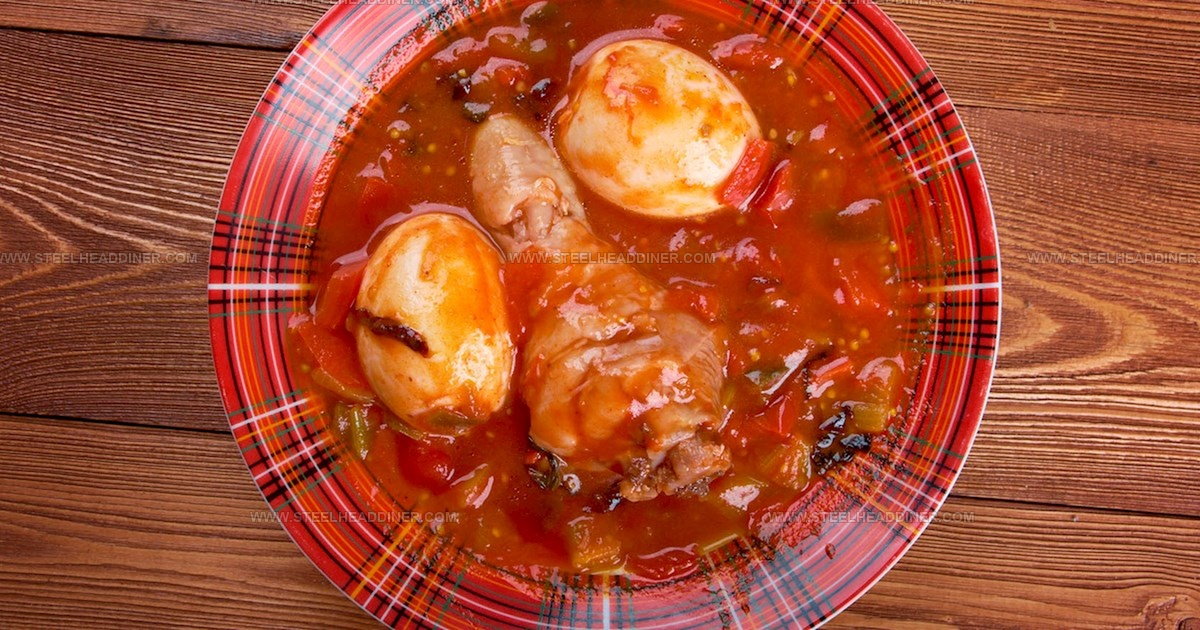

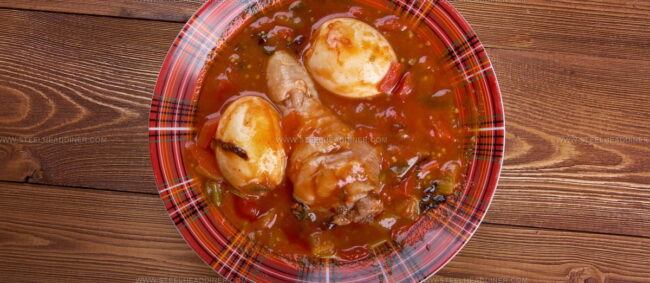

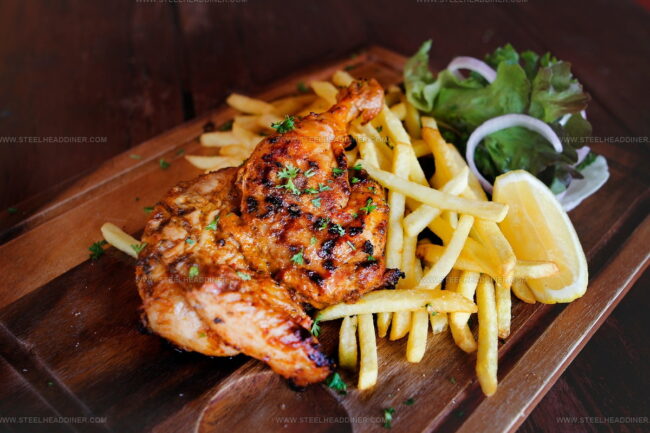


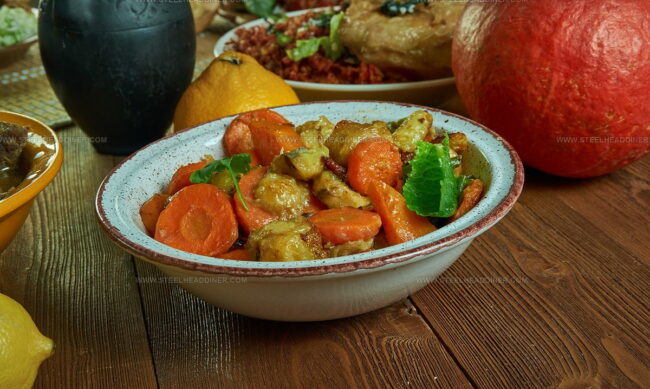

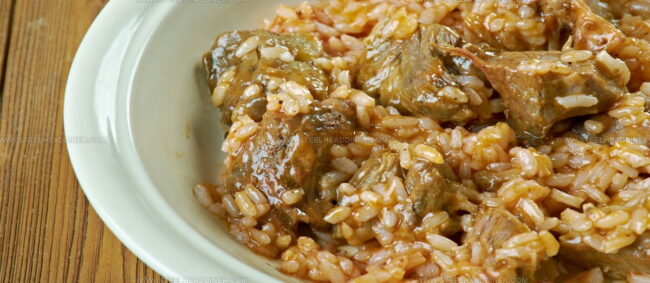
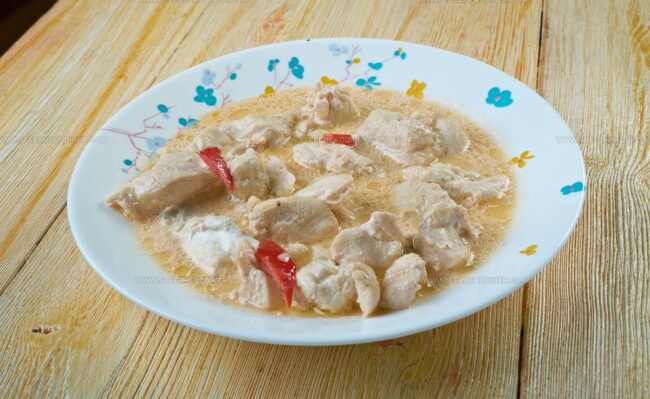
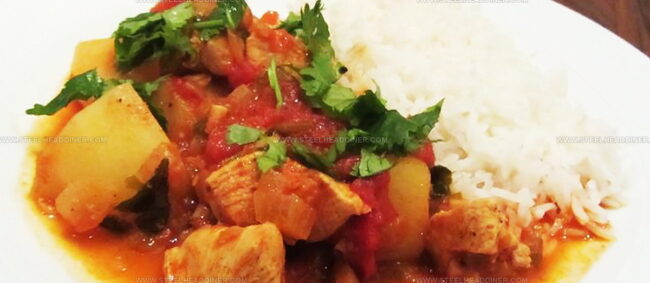
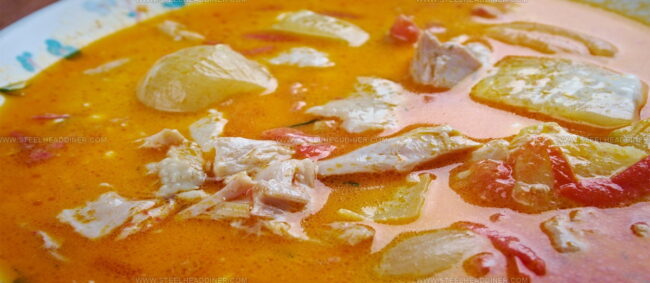
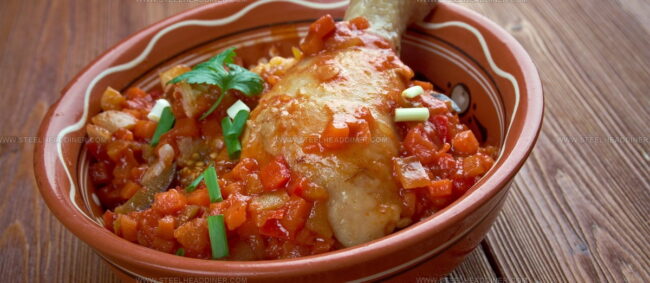
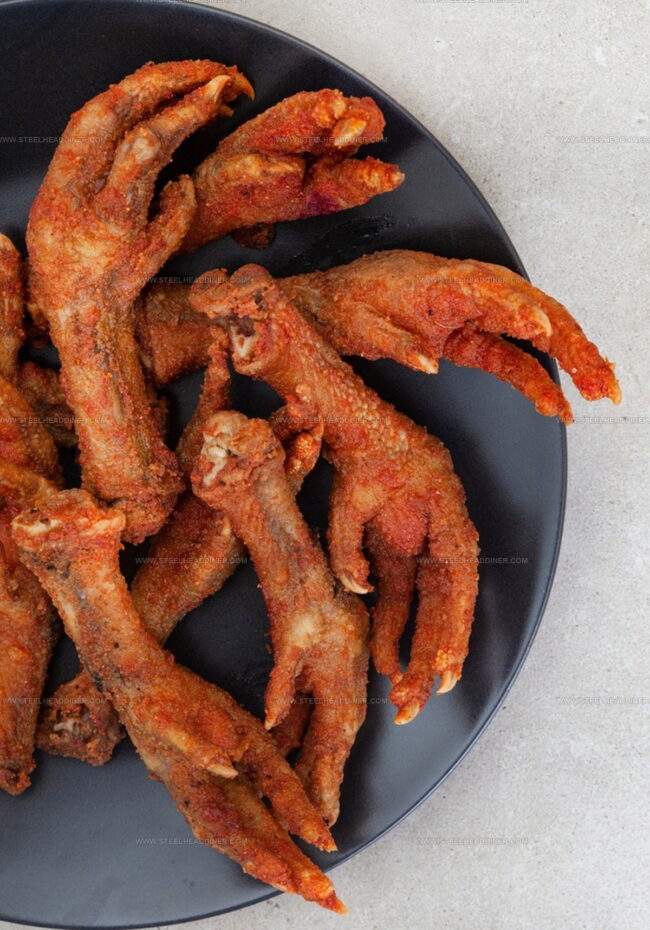
Jack Monroe
Founder & Recipe Innovator
Expertise
Pacific Northwest cuisine, Single-serving recipe development, Sustainable sourcing and cooking, Modern comfort food
Education
Brightwater
Associate of Applied Science in Culinary Arts
Focus: Sustainable cooking, seasonal ingredients, and food systems education
Jack grew up with a fishing rod in one hand and a cast-iron skillet in the other. After graduating from Brightwater: A Center for the Study of Food, he set out to prove that cooking for one could still taste like a feast.
Jack believes that food should feel real: fresh, fearless, and a little wild, just like the rivers he grew up around. For Jack, every single dish is a small adventure, and the best ones are the ones you can cook with heart, not hassle.